St.Katharine Docks
St Katharine Docks took their name from the former hospital of St Katharine's by the Tower, built in the 12th century, which stood on the site. An intensely built-up 23 acre (9.5 hectares) site was earmarked for redevelopment by an Act of Parliament in 1825, with construction commencing in May 1827. Some 1250 houses were demolished, together with the medieval hospital of St. Katharine. Around 11,300 inhabitants, mostly port workers crammed into unsanitary slums, lost their homes; only the property owners received compensation. The scheme was designed by engineer Thomas Telford and was his only major project in London. To create as much quayside as possible, the docks were designed in the form of two linked basins (East and West), both accessed via an entrance lock from the Thames. Steam engines designed by James Watt and Matthew Boulton kept the water level in the basins about four feet above that of the tidal river. By 1830, the docks had cost over £2 million to build.
Telford aimed to minimise the amount of quayside activity and specified that the docks' warehouses (designed by the architect Philip Hardwick) be built right on the quayside so that goods could be unloaded directly into them.
The docks were officially opened on 25 October 1828. Although well used, they were not a great commercial success and were unable to accommodate large ships. They were amalgamated in 1864 with the neighbouring London Docks. In 1909, the Port of London Authority took over the management of almost all of the Thames docks, including the St Katharine.
The St Katharine Docks were badly damaged by German bombing during the Second World War. All the warehouses around the eastern basin were destroyed, and the site they had occupied remained derelict until the 1990s
Because of their very restricted capacity and inability to cope with large modern ships, the St Katharine Docks were among the first to be closed in 1968, and were sold to the Greater London Council. The site was leased to the developers Taylor Woodrow and most of the original warehouses around the western basin were demolished and replaced by modern commercial buildings in the early 1970s, beginning with the bulky Tower Hotel (designed by Renton Howard Wood Partnership; opened in September 1973) on a site parallel to the river just to the east of Tower Bridge. This was followed by the World Trade Centre Building and Commodity Quay (both designed by architects Watkins Gray International). Development around the eastern basin was completed in the 1990s. The docks themselves becoming a marina. The development has often been cited as a model example of successful urban redevelopment.
There was at one point a plan to open a St Katharine Docks tube station on the proposed Fleet line. It would have been between Fenchurch Street and Wapping. An eastwards extension was eventually built as part of the Jubilee line but took a different route south of the Thames. The closest stations to the Docks today are Tower Hill (tube) and Tower Gateway DLR station, both roughly equidistant from the north-west corner of the Docks.
Between 2005 and 2008 the former Danish lightship "Lightship X" was moored on the west dock, and used as a restaurant, before returning to Denmark.
The marina, including restaurants and offices, was owned by Max Property Group, operated by investor Nick Leslau, since 2011, and was sold to Blackstone Group in 2014. Over the next three years, Blackstone completed a major restoration. In May 2017, the company retained agents to find potential buyers for the complex; the listing price was £435m. In October 2017, however, Blackstone withdrew the property from the market because bids were below the asking price.
The area now features offices, public and private housing, a large hotel, shops and restaurants, a pub (The Dickens Inn, a former brewery dating back to the 18th century), a yachting marina and other recreational facilities. It remains a popular leisure destination.
The east dock is now dominated by the City Quay residential development, comprising more than 200 privately owned flats overlooking the marina. The south side of the east dock is surrounded by the South Quay Estate which was originally social housing. The dock is still used by small to medium-sized boats on a daily basis.
The anchor from the wreck of the Dutch East Indiaman Amsterdam is on display at the entrance to the east dock
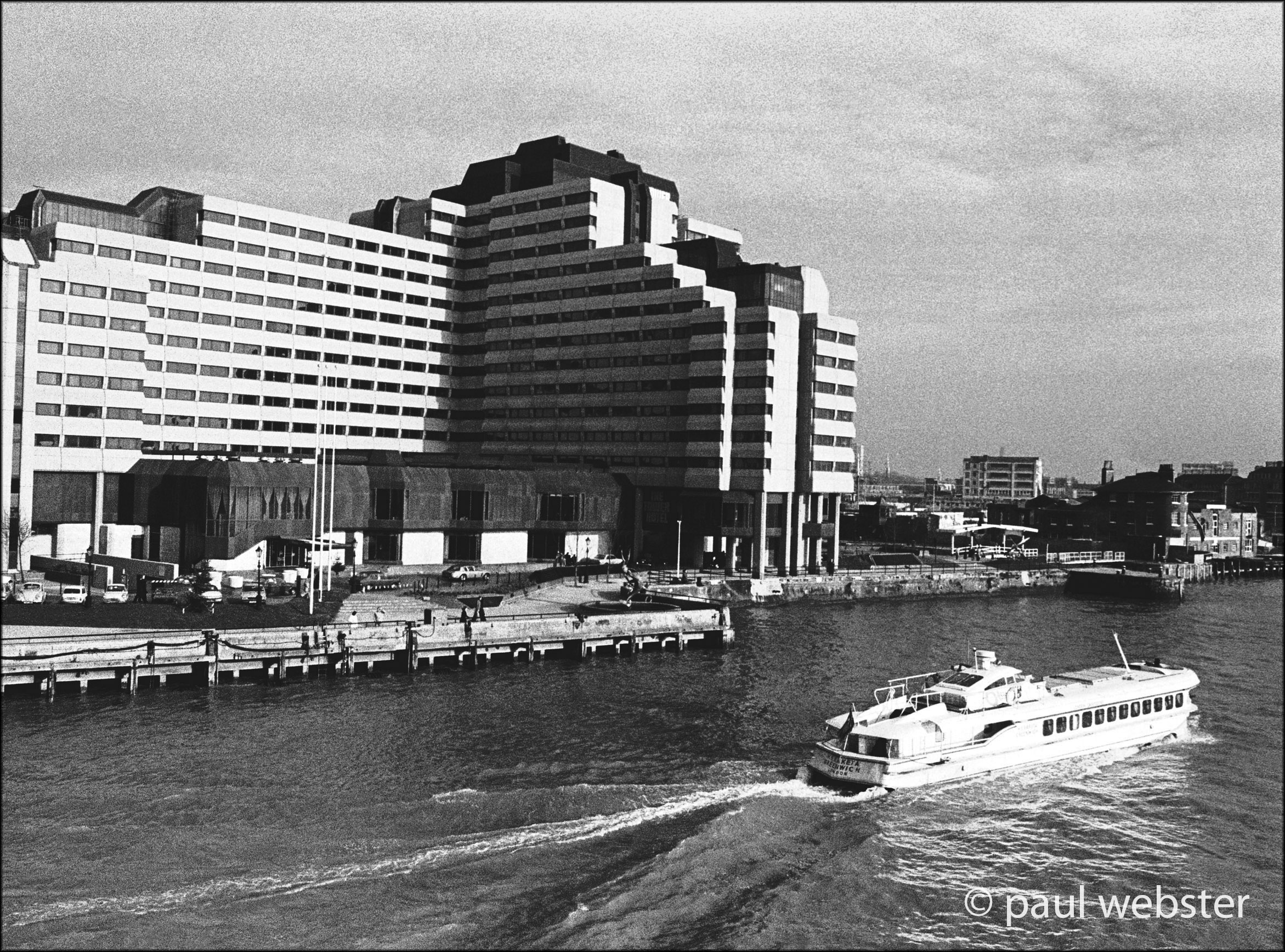
1972. St. Katharine's Dock
From Tower Bridge looking towards Tower hotel and entrance to St.Katharine's dock being passed by one of the new riverboats .
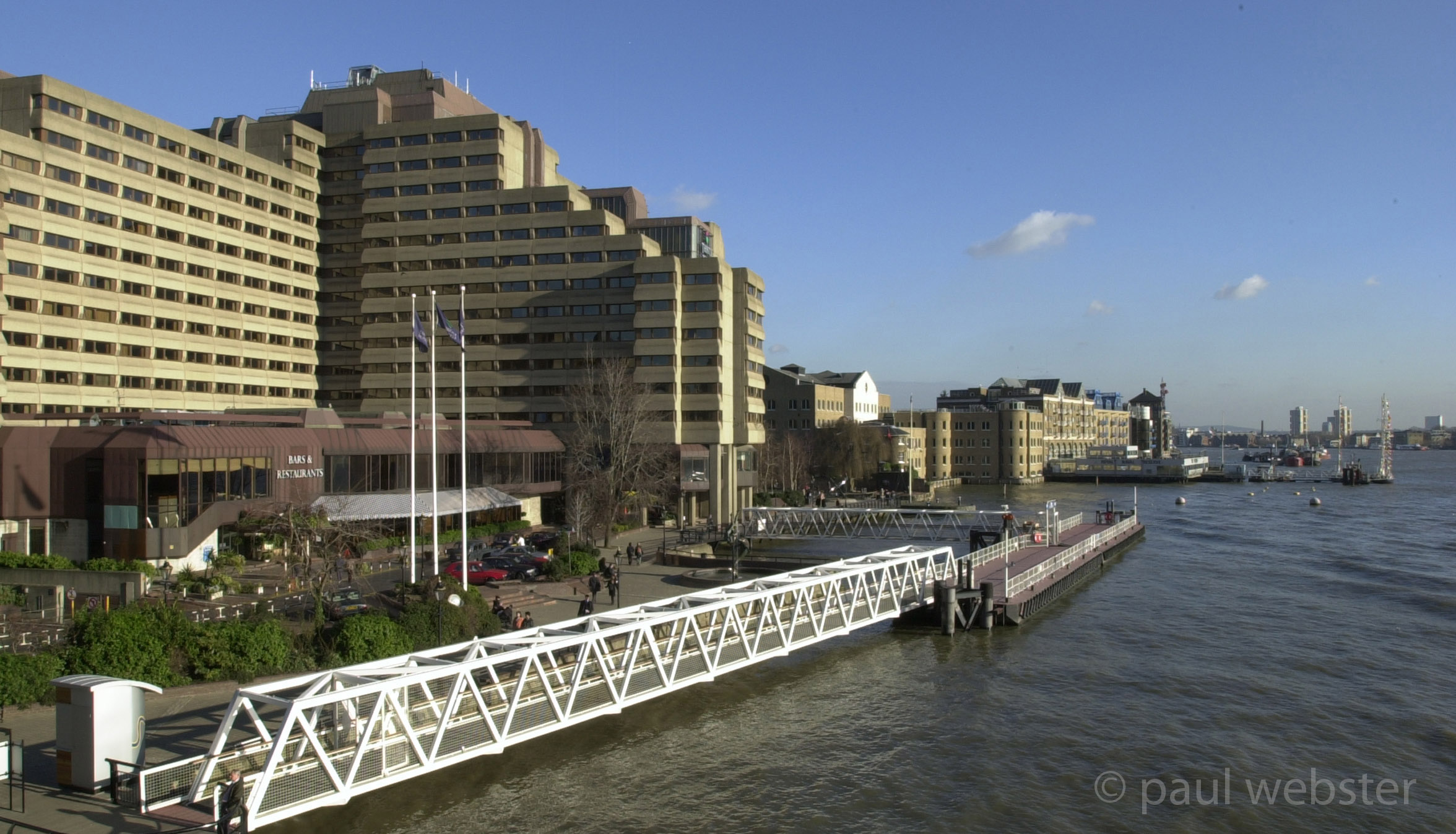
2002. St.Katharine's dock
Tower hotel and St.Katharine's dock entrance with the new quay for river commuters in the foreground.

2018.Tower Hotel, St. Katharine's Dock
In the foreground one of the new regular Thames Cruisers running every 40 minutes up and down the river. New luxury apartment developments have appeared downriver from the dock and hotel.

1972. St.Katharine's dock
After getting access to the roof of the Tower Hotel I took this image showing the layout of St.Katharine’s docks and in the distance to the East the remains of the old London Dock

2002. St.Katharine's dock
Unfortunately I couldn't get access to the roof of the Tower hotel on this visit but the new developments are plainly visible to the east where London Dock stood.
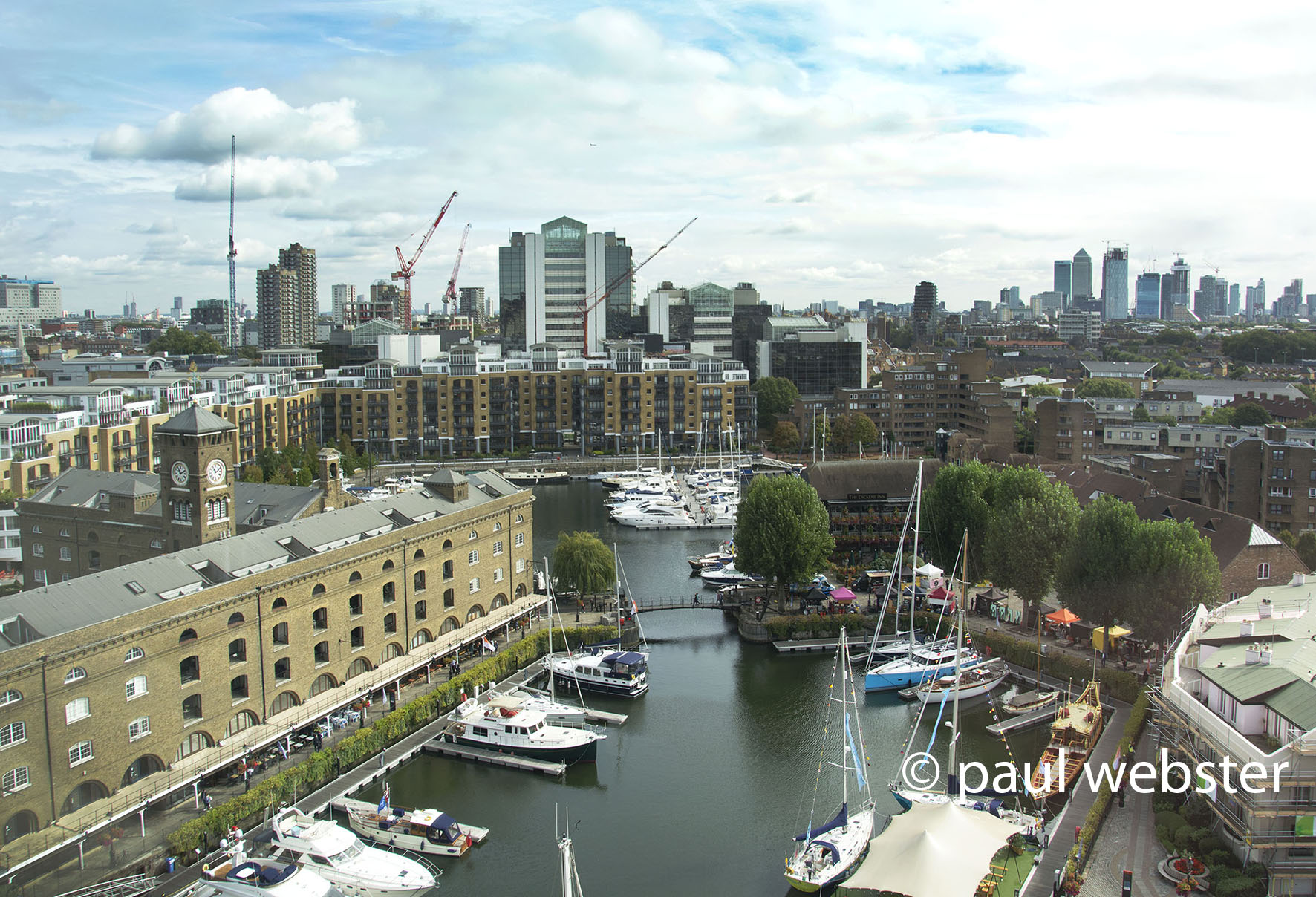
2018. St.Katharine's Dock
From the top of the Tower Hotel the view to the East with Ivory House in the foreground and St.Katharine’s marina. The newest tower blocks are visible in Canary Wharf and the cranes working on the new Wapping village to the left.
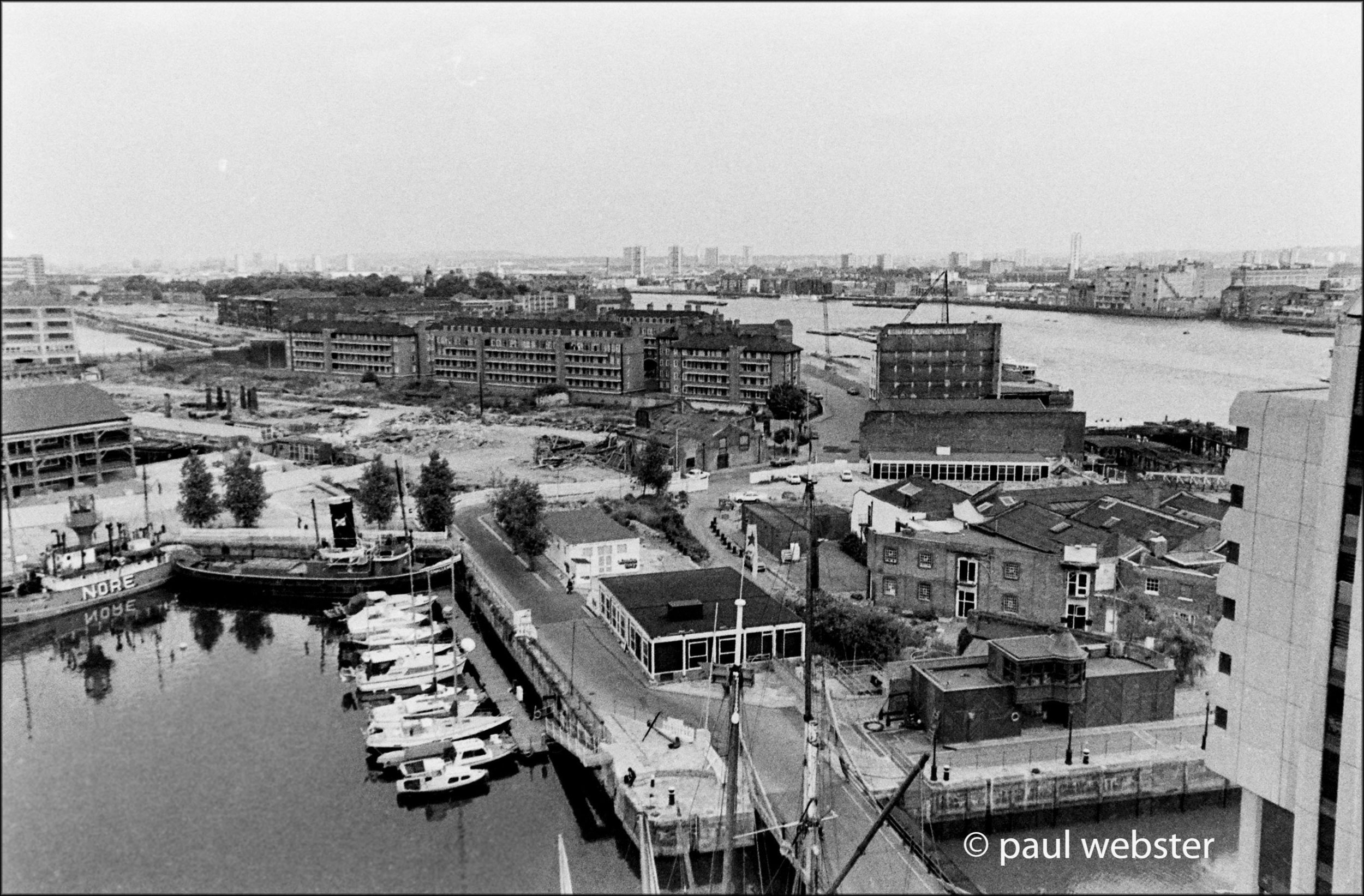
1971. St.Katharine's Dock
The view downriver from the Tower Hotel in 1971 with work about to start on the new housing by the dockside.
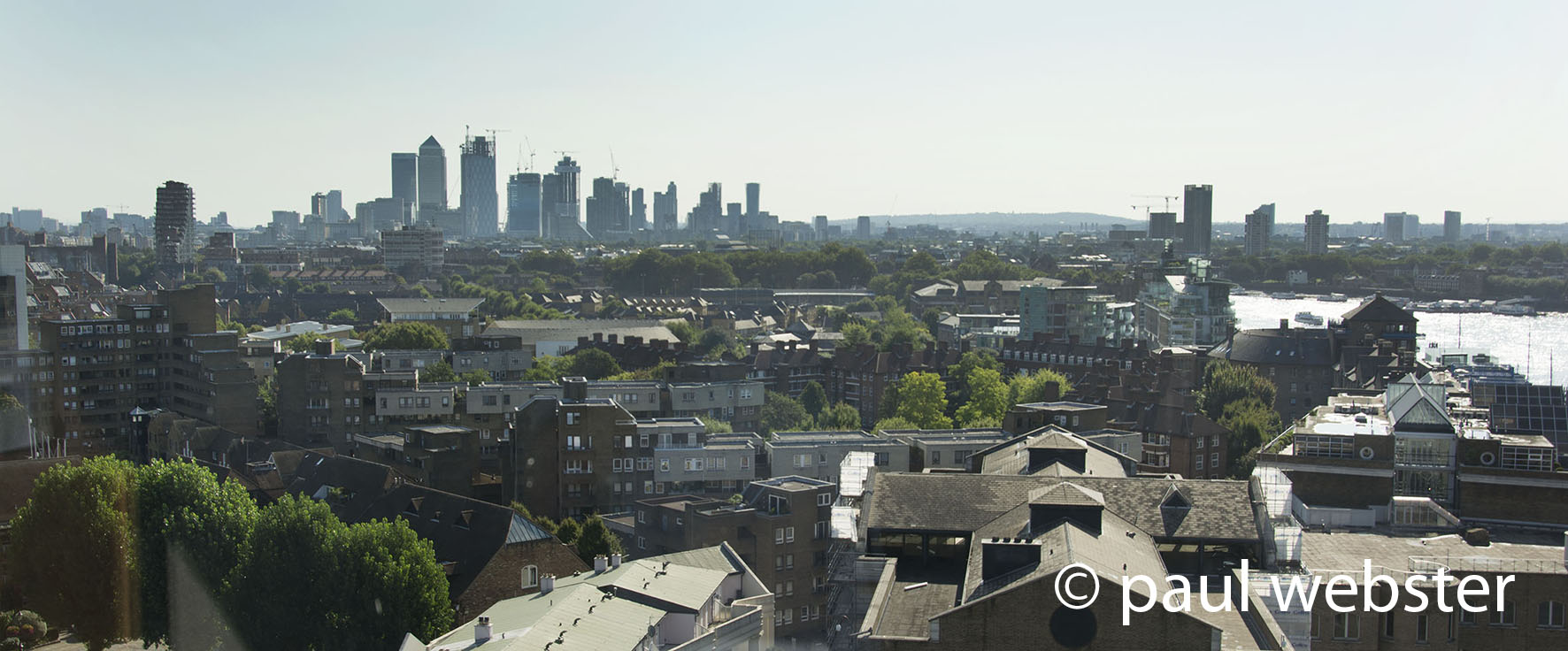
2018. Canary Wharf from St.Katharine's Dock.
The view downriver from the the Tower Hotel in St.Katharine’s Dock in 2018 with still more towers appearing in West India Dock, Canary Wharf.

1972. St.Katharine's dock
View from ruins of the Telford warehouses and side of trade centre looking towards Ivory House St.Katharine’s Dock centrepiece.

2002. St.Katharine's dock
View of Ivory House in St.Katharine's dock from restored Telford warehouses showing the new cruiser berths.

2018. St.Katharine's Dock
in 2018 the new cafes and restaurants beneath Tower Bridge House are setting up for the breakfast trade.

1971. St.Katharine's dock
Sailing barges alongside the shell of the Telford warehouses with the World Trade Centre at the end.
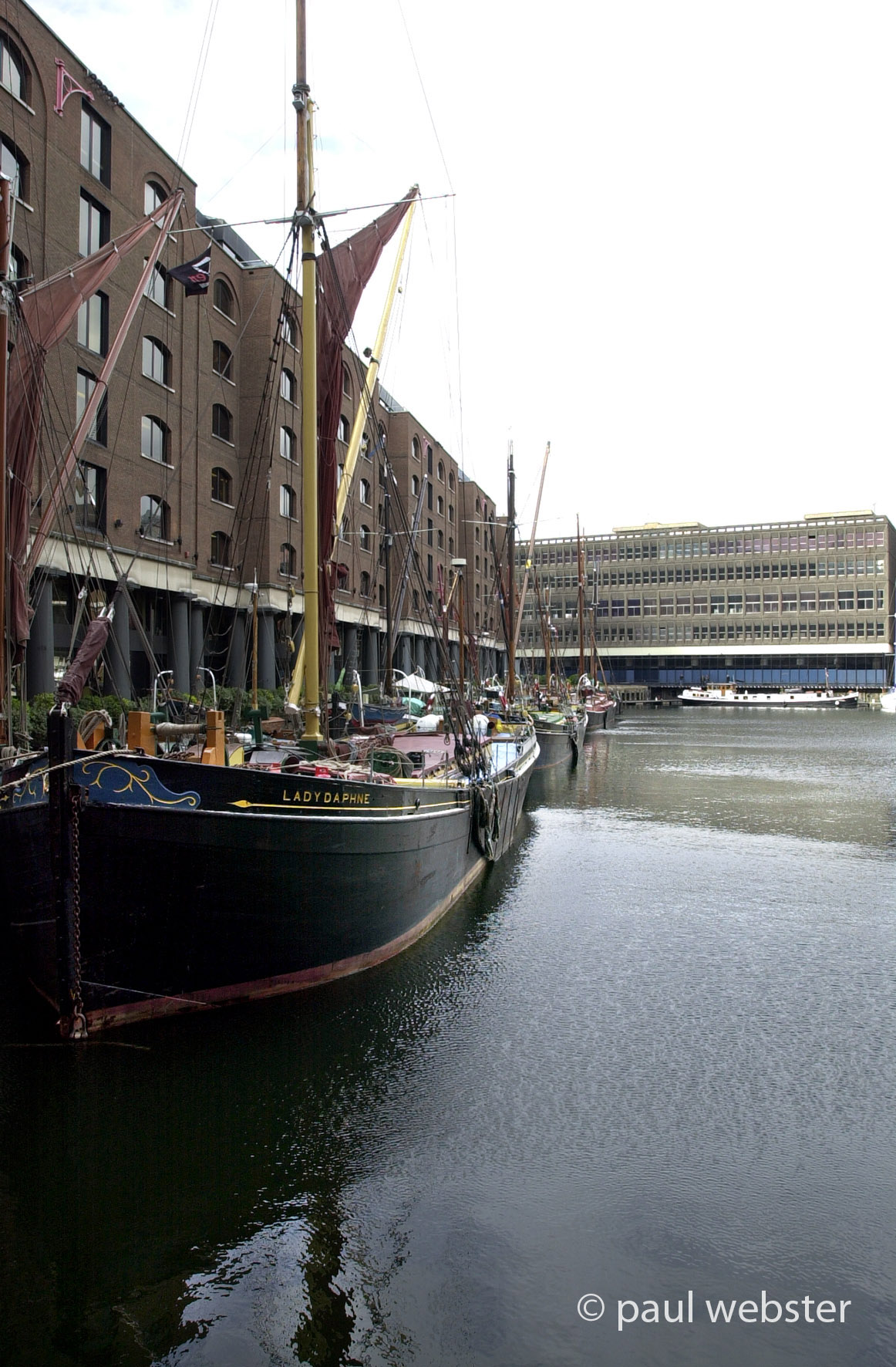
2002. St. Katharine's Dock
In 2002 Old barges are moored alongside International House as the restored Telford warehouses are known and at the end the World Trade Centre.

2018. St.Katharine's Dock
Old sailing barges restored and next to the Telford warehouses brought back to life as offices with Tower Bridge House and its row of cafes, pubs and eateries at the end replacing the old World Trade Centre. Commodity Quay, to the right, is another prestige office development based on the pre-existing warehouse.

1971. St.Katharine's dock
The original Thomas Telford warehouses unoccupied and abandoned and the new trade centre heralding the start of the regeneration in this dock.
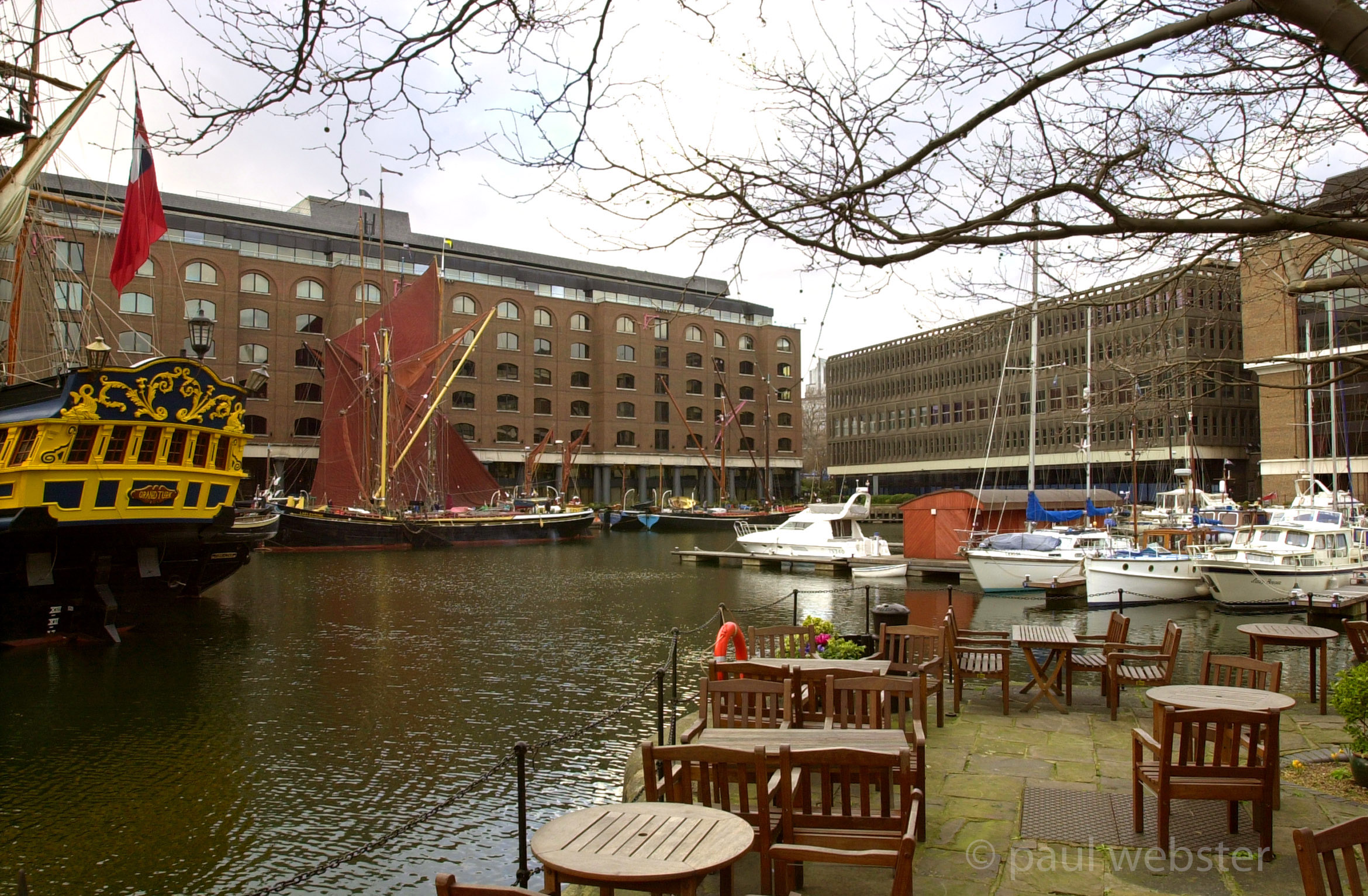
2002. St.Katharine's dock
Restored Telford warehouses which have become offices, and the newly built city exchange to the right behind the pub tables and newly berthed yatchs.
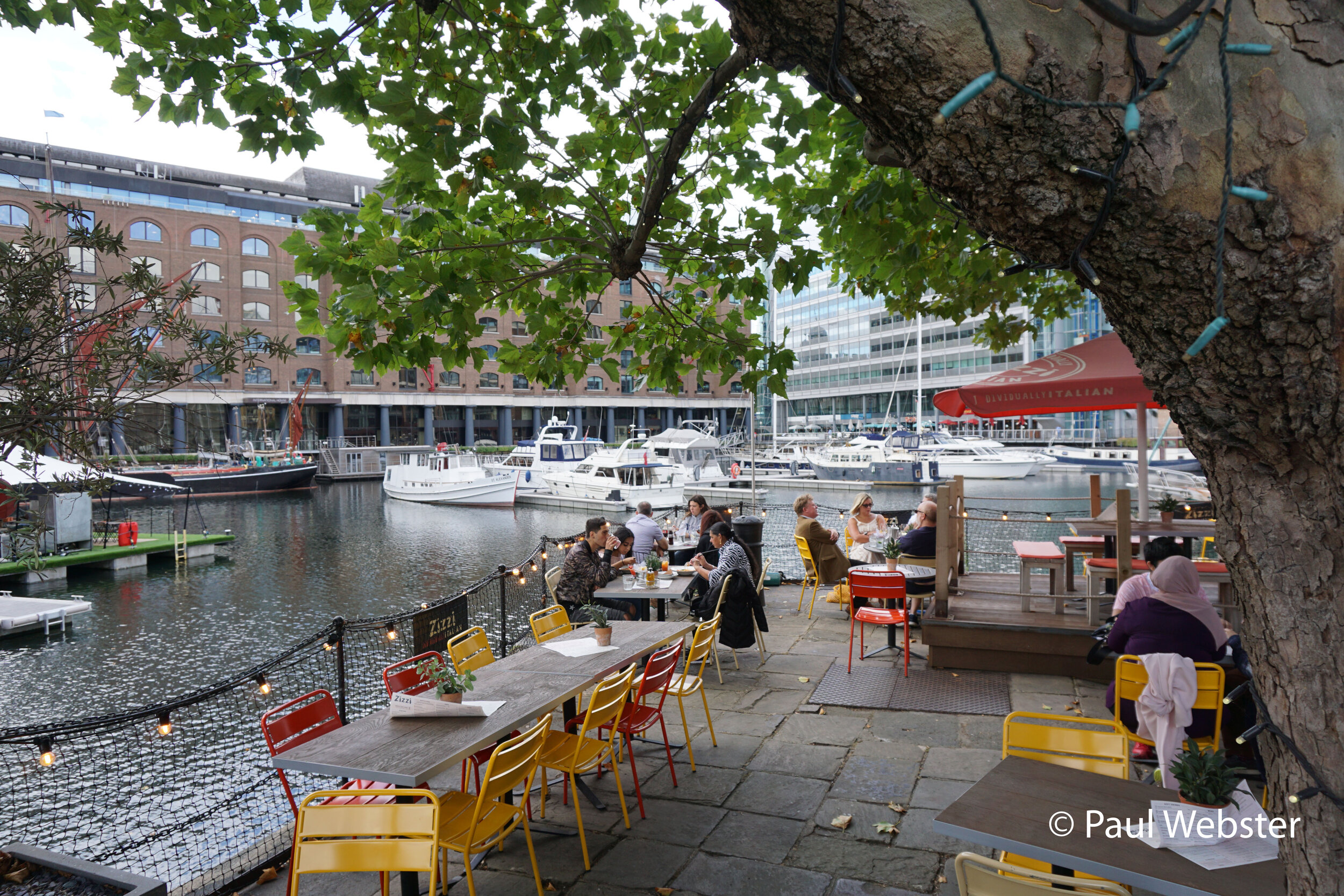
2020. St Katharine's Dock
From Zizzi’s pizza restaurant, the view across the St.Katharine’s Dock Marina basin to Telford’s warehouses and the the new Tower Bridge House offices and restaurants beneath.
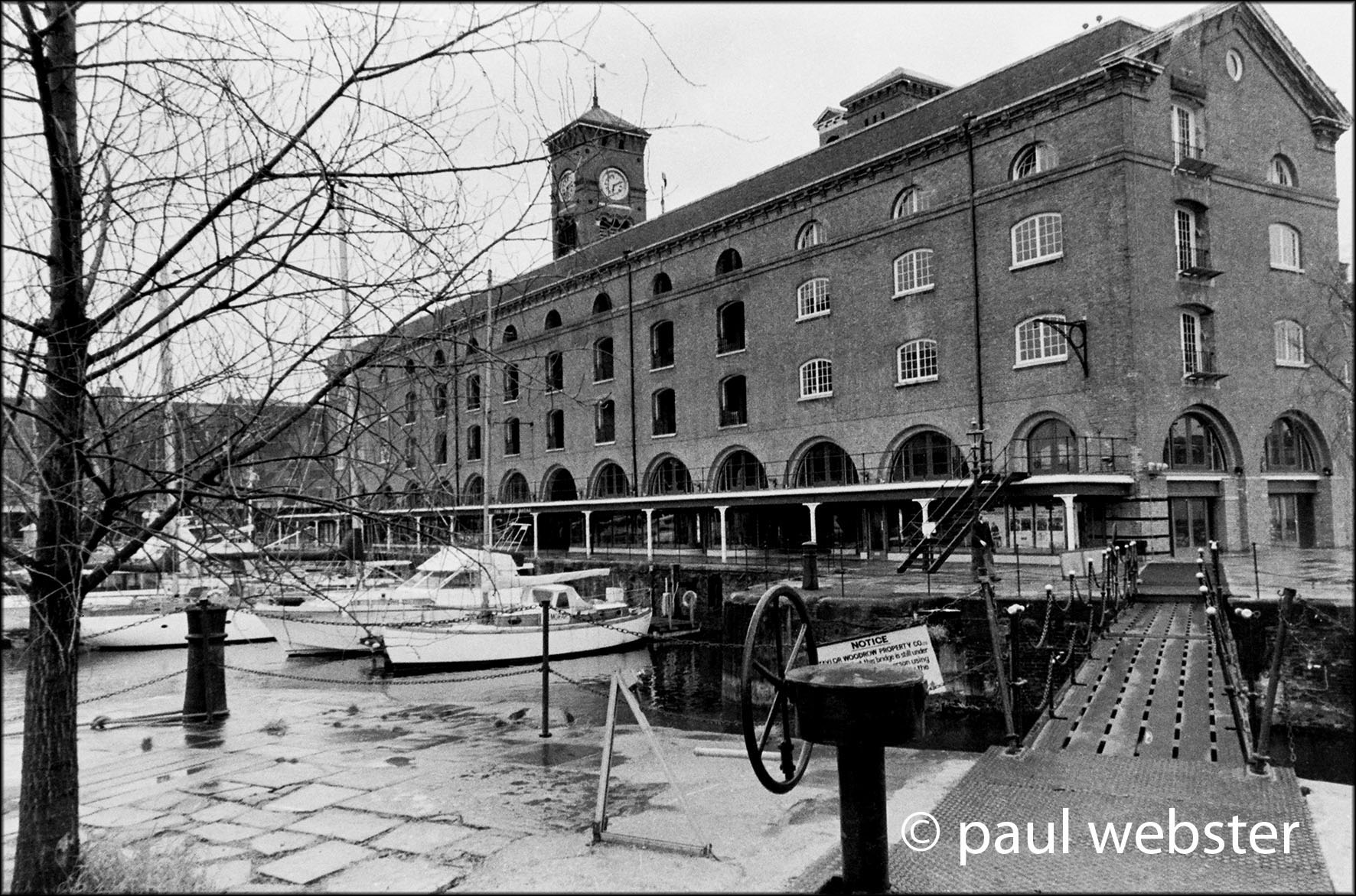
1971. Ivory House at St.Katharine's Dock
Ivory House which used to store valuable cargoes from the east has become luxury flats, restaurants,shops and and entertainment venue. The original mechanical Telford bridge is still in use to cross the channel.
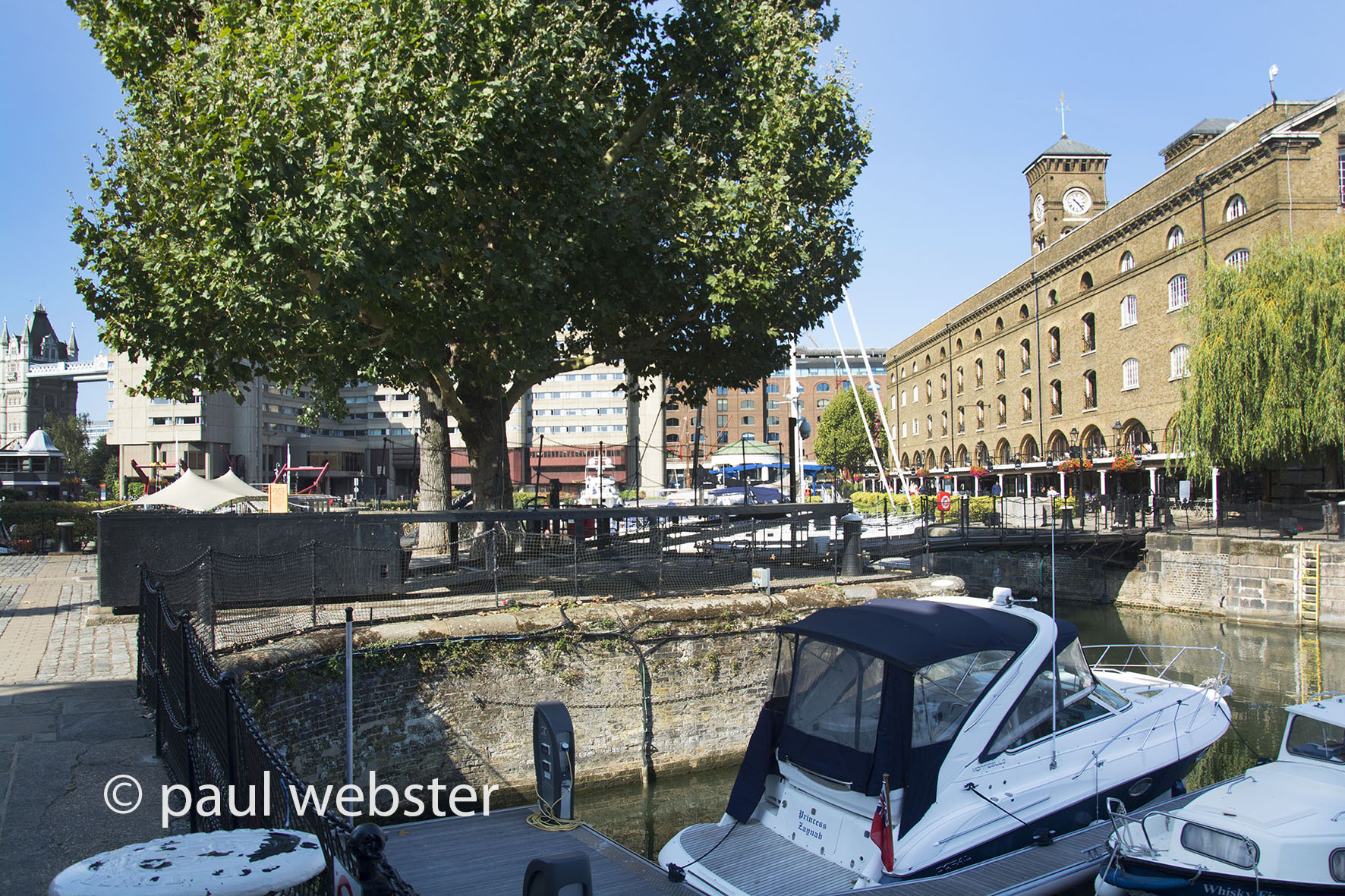
2018. Ivory House - St.Katharine's Dock
In 2018 the original mechanical Telford bridge stands on the dock alongside the new electric bridge from Dicken’s Inn to Ivory House whose luxury apartments are now occupied by celebrities and business folk from around the world.

2018. St.Katharine's Dock lunch market
In the plaza of Dickens Inn the weekly “Kerbs” lunch market with 18 stalls.

1972. St.Katharine's dock
This vew from St.Katharine's dock basin to Tower Bridge in the west shows the original old wooden brewery with work commencing to restore and convert it into a pub.

2002. St.Katharine's dock
The old warehouse is now a fully functioning pub and the yacht haven has been developed and is now very busy and almost fully occupied.
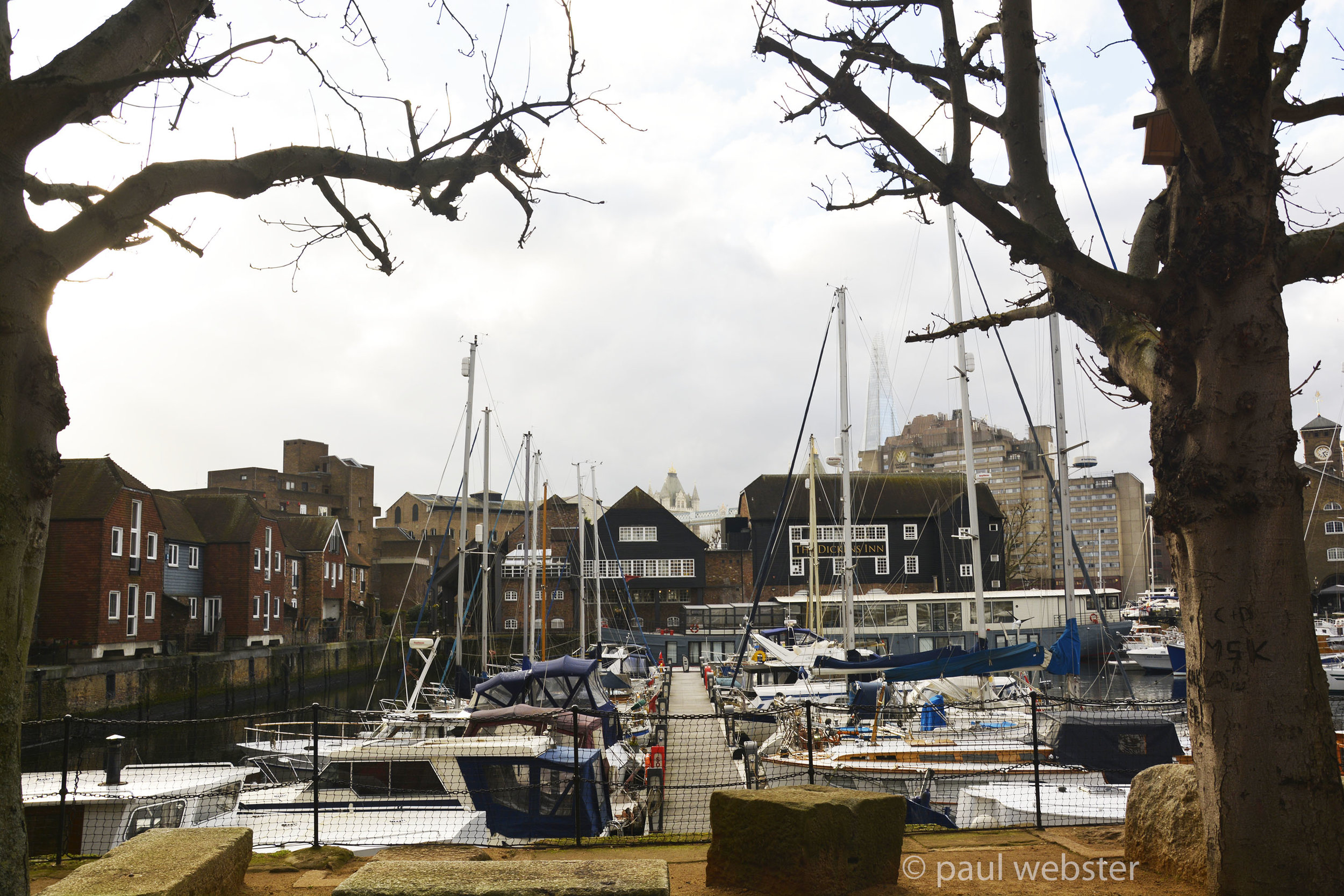
2018. St.Katharine's dock
Looking west the Dickens Inn and the Tower Hotel, the Shard now appears above the hotel.
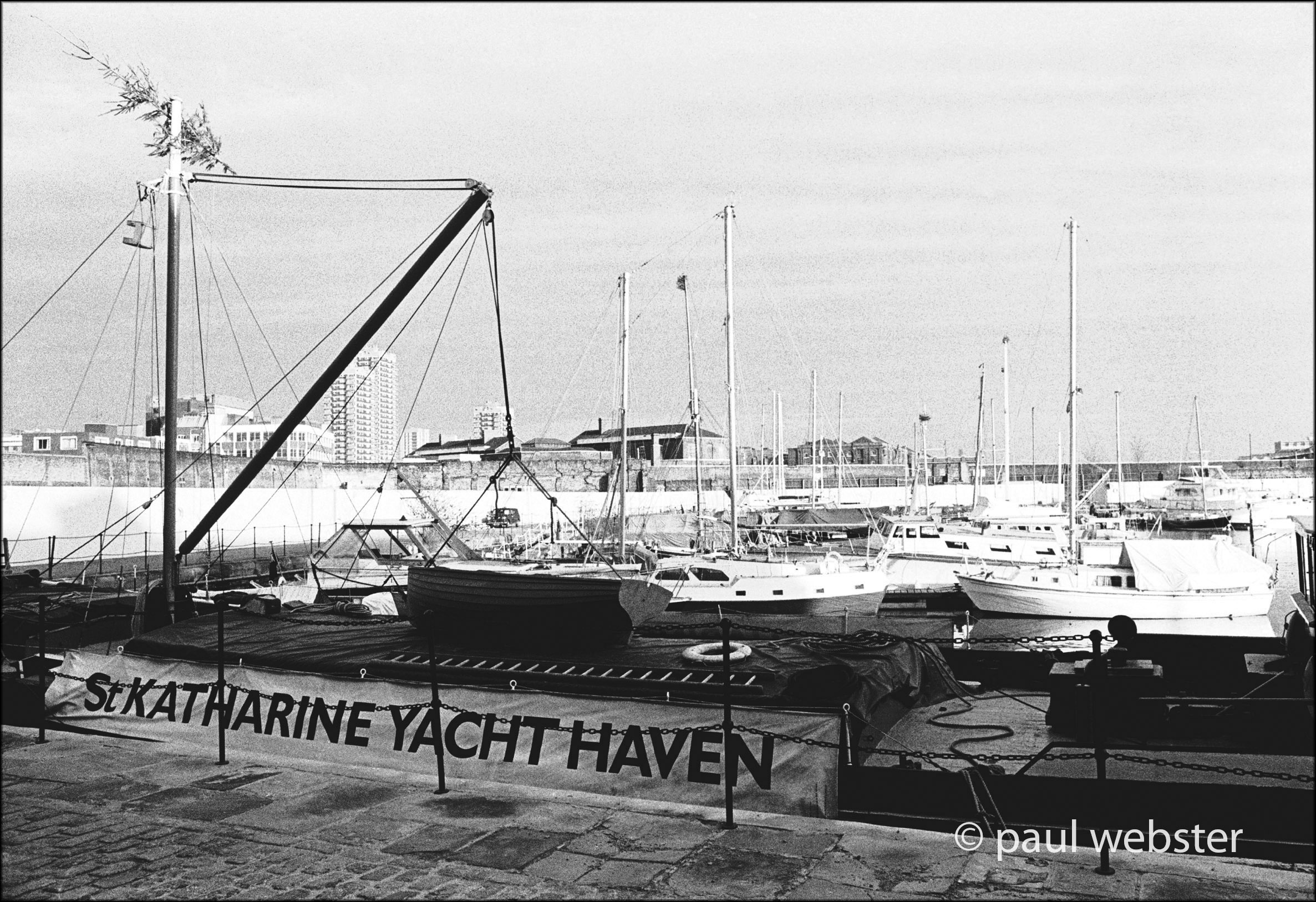
1972. St.Katharine's dock
St Katharine's yacht haven packed with many small boats and about to see the construction of blocks of residential apartments.
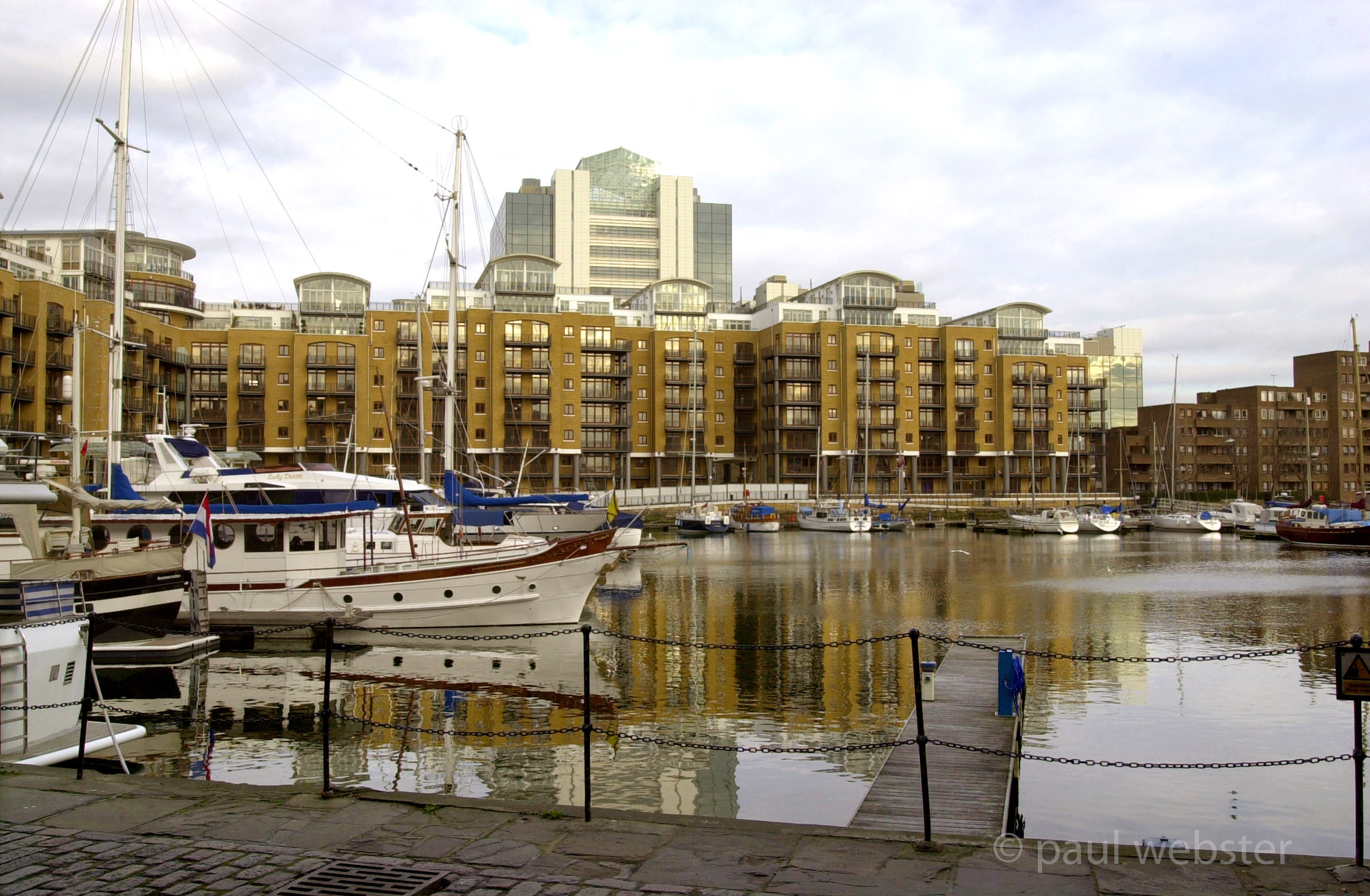
2002. St.Katharine's dock
The apartments have been finshed and occupied St Katharine's yacht haven is home to boat owners and city workers.

2018. St. Katharine's Dock
The yacht haven continues to expand with smart apartments around the dock, the central large block of Quadrant House has a grand Waitrose beneath.

1972. St.Katharine's dock
St.Katharines dock basin looking west to Tower Bridge showing the old Dickens Inn reconstruction.
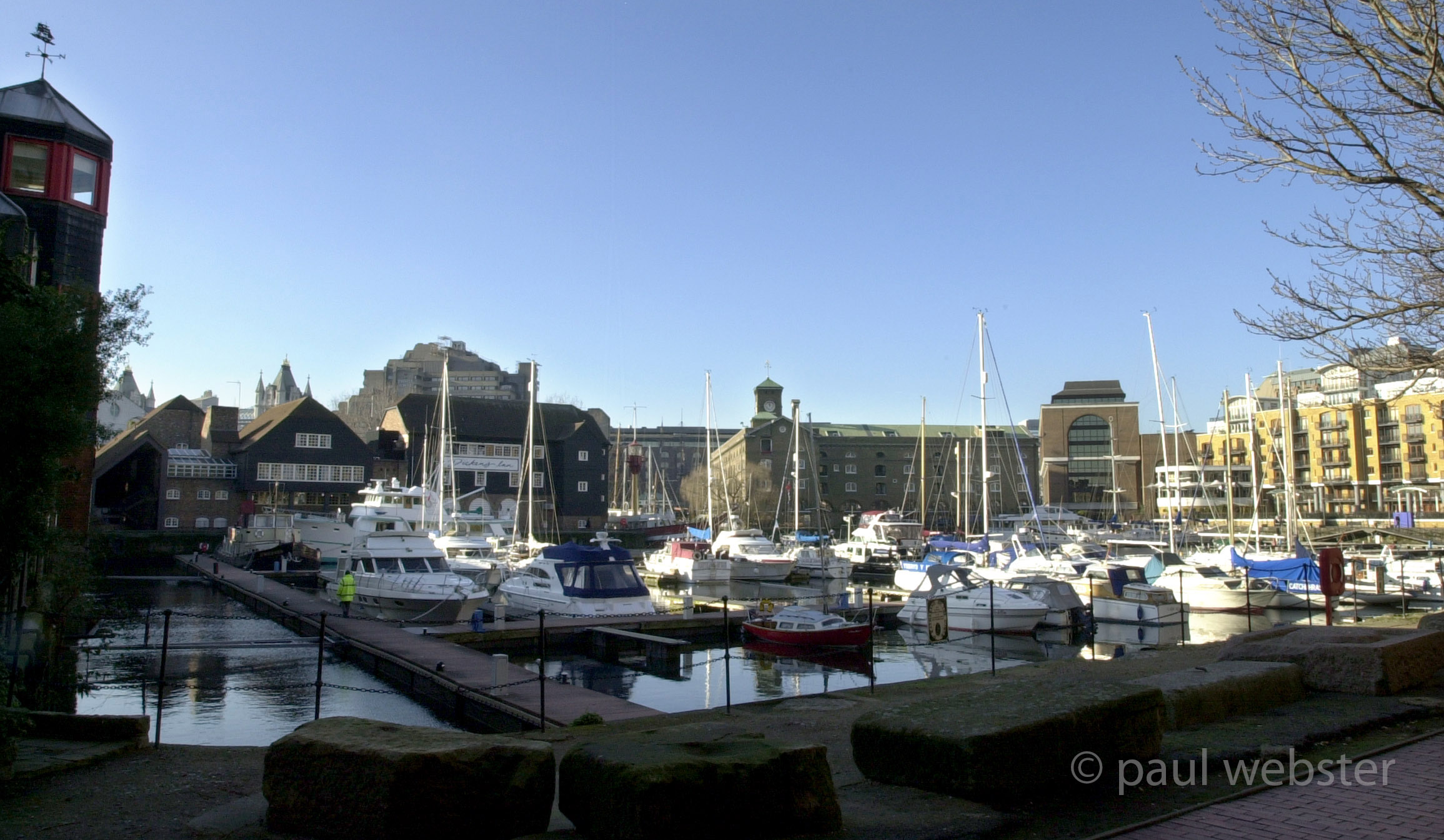
2002. St.Katharine's dock
St.Katharine's basin with restored pub and new developments and the updated yacht haven.
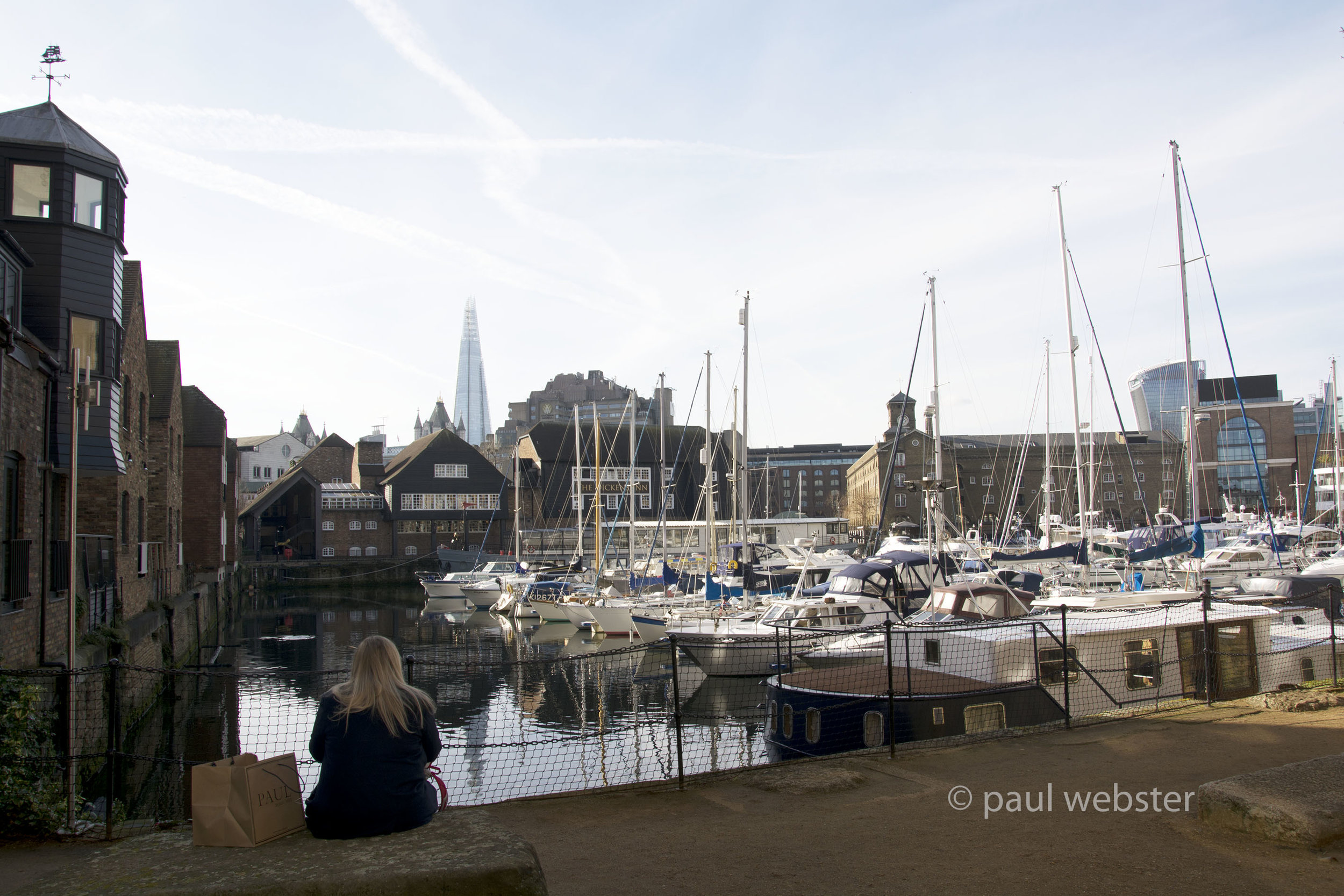
2018. St.Katharine's dock
St.Katharine's yacht haven with Dickens pub and the Shard now appearing above Tower Bridge.
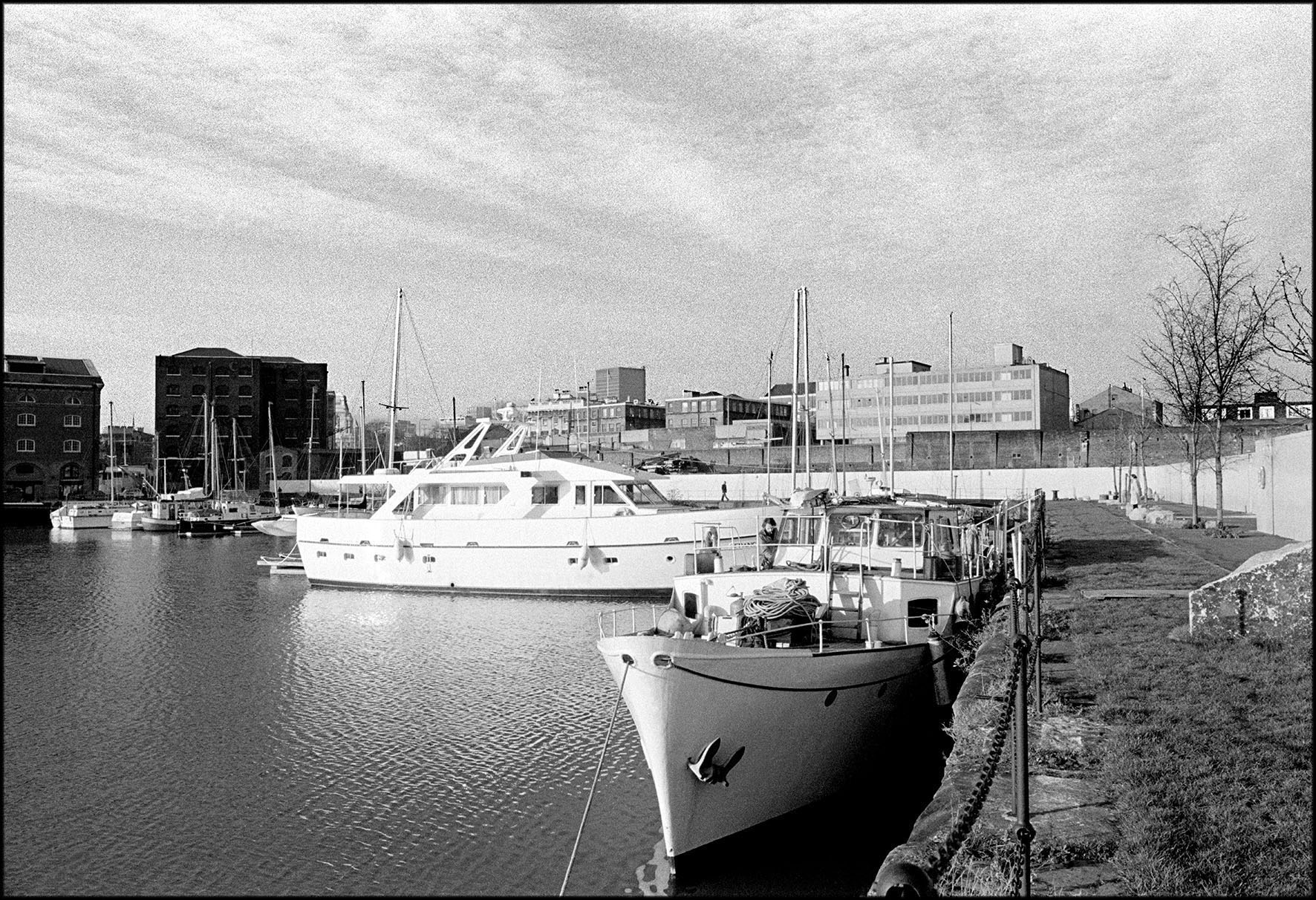
1972. St.Katharine's dock
Looking N.E.over St.Katharine's basin with Ivory House and the World Trade centre to the left.
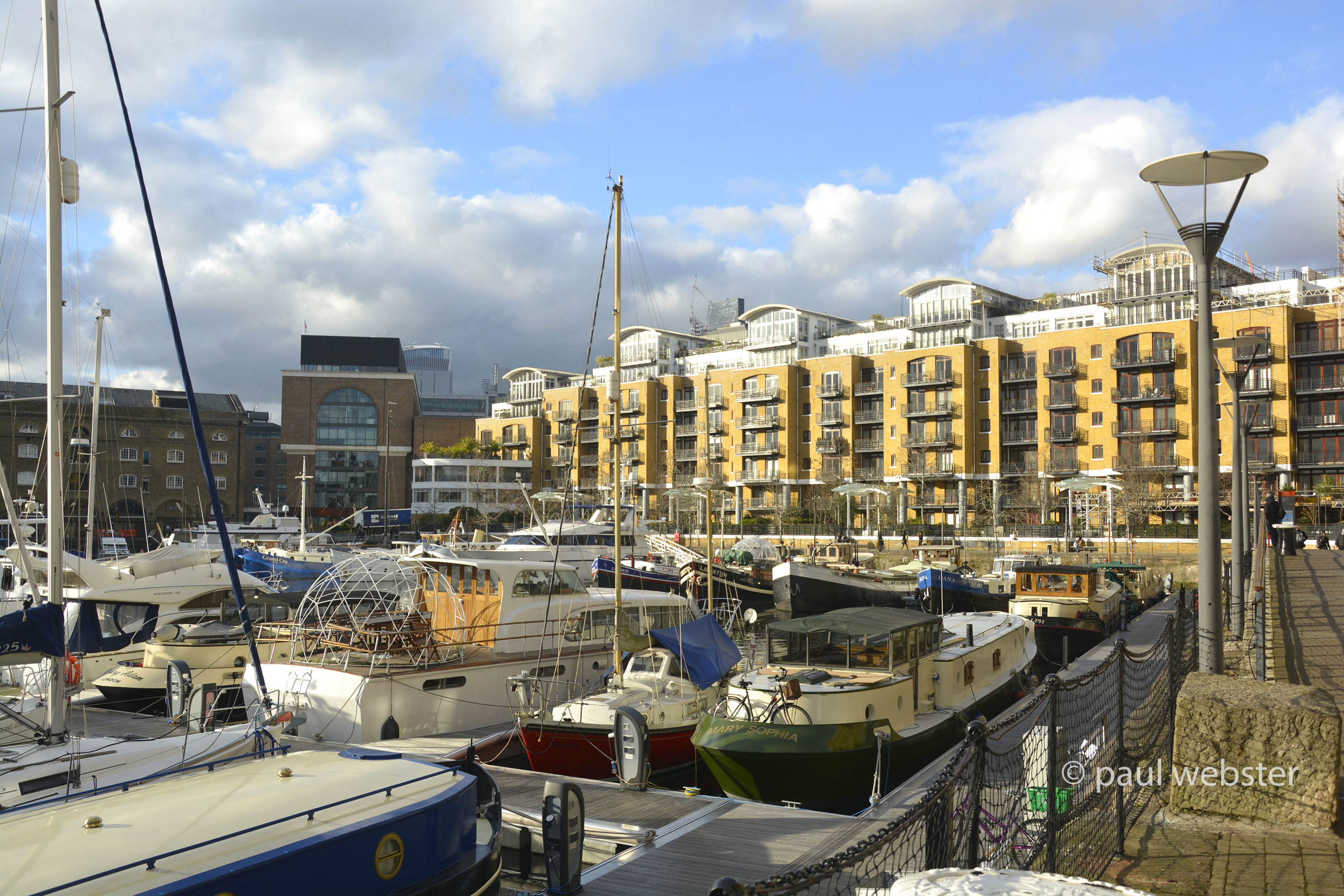
2018. St.Katharine's dock
St. Katharine's yacht haven with new apartments surrounding it and the restored warehouse Commodity Quay, now offices, to the left next to Ivory House.
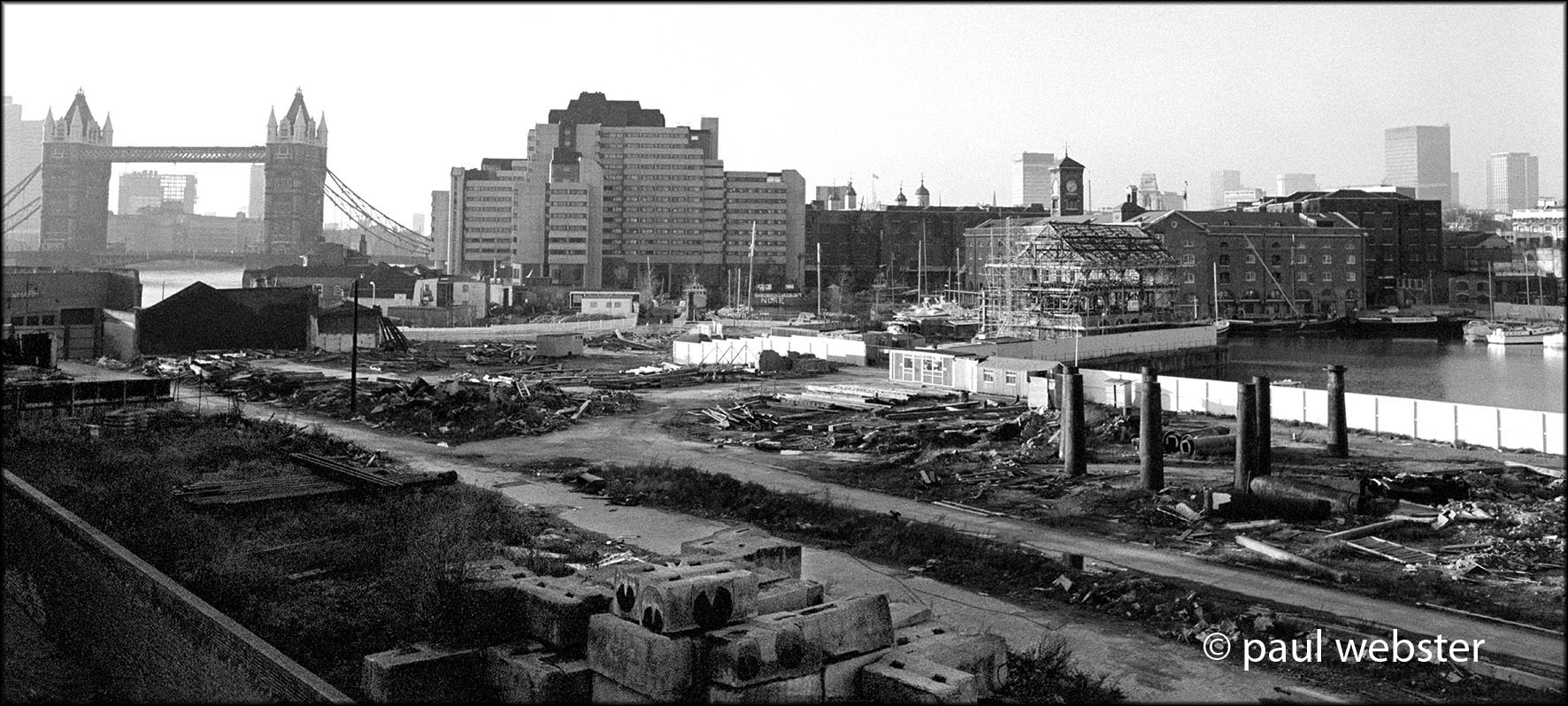
1971. St.Katharine's dock
Building site looking west toward the Tower Hotel and St. Katharine dock warehouses.

2018. St.Katharine's dock
From blocks of flats the current view towards St. Katharine warehouses ( now offices and apartments ).
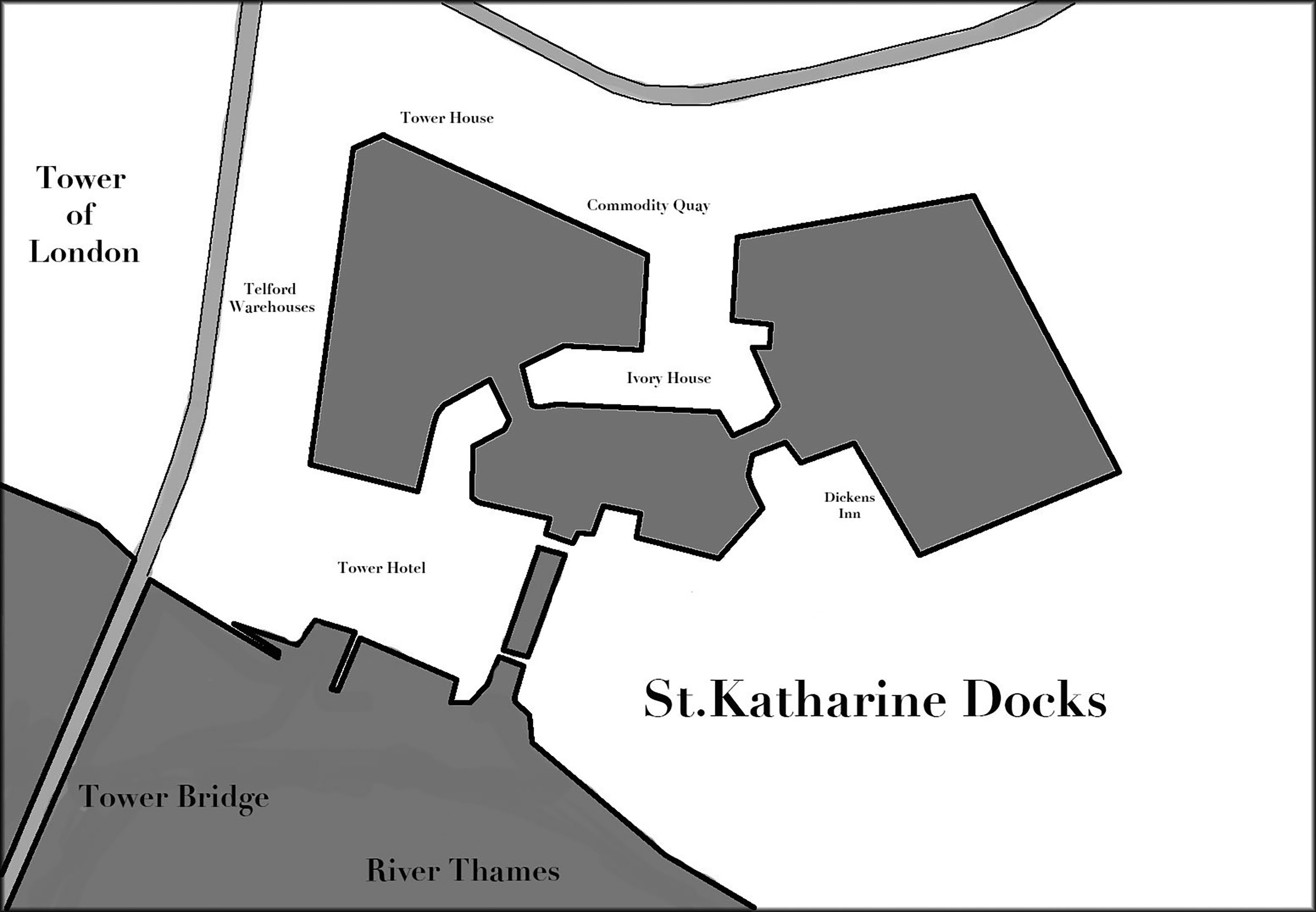
Map of St.Katharine Docks 1972/2018
A map of the docks showing no change from 1972 till 2018.